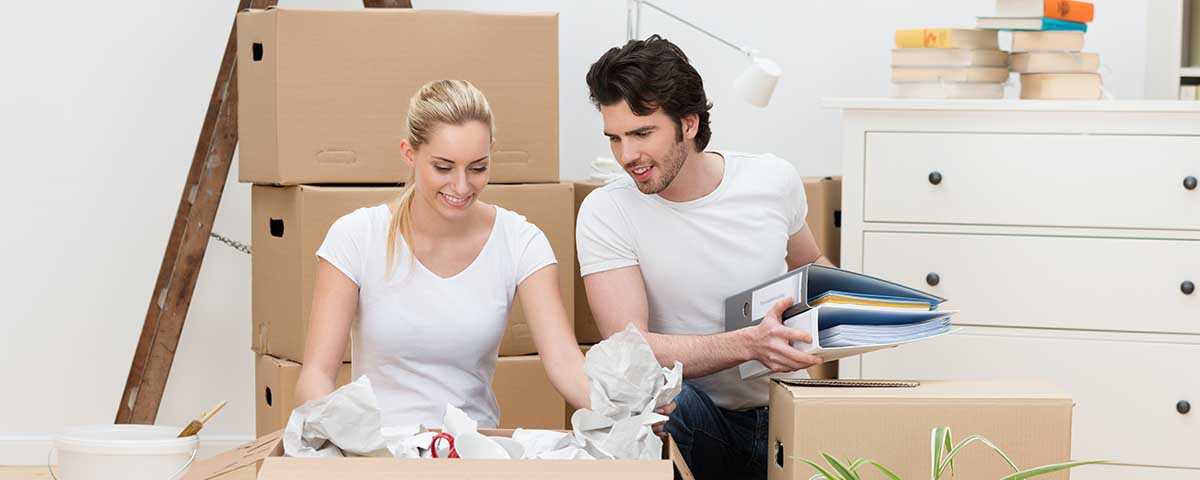The ultimate guide to relocating your bed and mattress
Posted on 09/06/2025
The Ultimate Guide to Relocating Your Bed and Mattress
Relocating your bed and mattress can feel like a daunting task, whether you're moving across town or embarking on a cross-country journey. Your bed is a sanctuary for restful nights, and ensuring it survives moving day is crucial for your comfort and health. In this comprehensive guide, we'll cover everything you need to know about moving your bed and mattress safely--from preparation and packing to transportation and reassembly. Whether you have a king-sized memory foam mattress or a sturdy wooden frame, our guide will help make your transition smooth and stress-free.
Why Properly Relocating Your Bed and Mattress Matters
Many people underestimate the complexities of moving a bed and mattress. Beds are large, often cumbersome, and can be damaged easily if not handled correctly. Mattresses, in particular, can lose their shape or harbor allergens if exposed during transport. Proper relocation not only ensures the longevity of your furniture but supports your health by maintaining a clean and supportive sleeping environment.
Potential Risks When Moving Beds and Mattresses
- Physical Damage: Scratches, dents, or breakage to bed frames and mattress deformation are common during improper moves.
- Hygienic concerns: Mattresses can pick up dirt, dust, and even pests if not properly protected.
- Lost Parts: Bed frames often have small connectors or screws that are easy to lose.
- Personal Injury: Handling heavy or unwieldy items increases the risk of injury.
By following our step-by-step tips, you'll not only make moving your mattress and bed easier but also preserve your investment in high-quality sleep.

Preparing to Move Your Bed and Mattress
Before the big day arrives, some preparations can make a world of difference. The key to a stress-free move is organization and planning.
Gather Packing Supplies
- Mattress Bag or Cover
- Moving Blankets and Plastic Wrap
- Bubble Wrap and Tape
- Tool Kit for Disassembly
- Zip-lock Bags for Hardware
- Labels and Marking Pens
Tip: Special mattress bags are available at moving supply stores. These protect your mattress from dirt, moisture, and pests during transit.
Measure Everything
Before starting, measure your bed frame and mattress as well as doorways, hallways, and elevators. This ensures your furniture will fit on its way out (and into) your new home. It may also help you determine the best route for moving heavy or large pieces.
How to Disassemble Your Bed Frame
Most bed frames need to be taken apart for easy transport, especially if they're larger (queen, king, or California king size). Disassembling your bed frame not only makes the move easier but also prevents structural damage.
Step-by-Step Bed Frame Disassembly
- Remove Bedding and Pillows: Strip the bed completely. Wash and pack linens separately for freshness.
- Take Off the Mattress: Carefully place it in a protective bag and set aside.
- Remove Slats or Support Boards: Some bed frames have slats or panels that lift out easily.
- Unscrew the Headboard and Footboard: Use your tool kit to unscrew major pieces. Place screws and connectors in labeled zip-lock bags for easy reassembly.
- Label the Parts: Attach labels to frame parts or take photos on your phone for reference.
Pro Tip: Take a video or photos during disassembly. These will serve as handy guides when setting up your bed in your new home.
How to Safely Move Your Mattress
Your mattress is one of the most important (and expensive) items in your bedroom. Improper handling can lead to sagging, tears, or even contamination. Here's how to keep your mattress in top condition during a move:
Protecting Your Mattress
- Use a Mattress Bag: Slide the mattress into a heavy-duty plastic cover to protect against dirt, water, and bugs.
- Seal the Bag: Use packing tape to fully seal the opening.
- Avoid Folding: Never fold innerspring or hybrid mattresses, as this can cause structural damage. Memory foam mattresses can be bent slightly, but always consult manufacturer guidelines.
Transporting the Mattress
- Keep Upright: Where possible, transport the mattress standing on its side. This prevents creasing and makes loading easier.
- Use a Dolly: For heavy or large mattresses, use a moving dolly and ask for help.
- Secure During Transit: Use straps or bungee cords to hold the mattress in place within the moving vehicle.
Moving Bed Frames and Box Springs
Bed frames come in all shapes and sizes--some are metal with simple connections, others made from solid wood with intricate hardware. Box springs and platform bases also need care to avoid unnecessary damage.
Packaging Bed Frame Parts
- Wrap Fragile Elements: Use bubble wrap or moving blankets around headboards, footboards, and side rails to prevent scratches and dents.
- Label Hardware: Always keep screws, washers, and other hardware in securely labeled bags.
- Bundle Similar Parts: Bind frame pieces together if possible with plastic wrap--this keeps sets organized and avoids loss.
Moving Box Springs
- Bag or Wrap: Use a mattress bag, cover, or moving blankets to shield the box spring.
- Transport Carefully: Like the mattress, keep upright if possible and avoid exposure to moisture.
- Check for Damage: Inspect box springs for cracks or bending before and after the move.
Packing for Maximum Protection
Whether you are hiring professional movers or going DIY, packing your mattress and bed frame safely is crucial.
Mattress Protection Tips
- Use a waterproof mattress cover to prevent mold if moving in rainy or humid conditions.
- Label the sides or corners if you have a pillow-top or direction-specific mattress.
- For delicate fabrics, wrap in a soft cotton sheet before sliding into the plastic mattress bag.
Protect Your Bed Frame
- Wrap wooden components in blankets and secure with tape or rope (avoid tape directly on wood).
- Pad metal frames with foam to prevent dents and scratches.
- Keep all assembly hardware together for quick reassembly.
Loading and Transporting Your Bed and Mattress
Proper loading and transport can make or break your move. Whether you're using a truck, van, or moving company, follow these guidelines for maximum safety:
How to Load the Mattress and Bed Frame
- Mattress Placement: Load the mattress on its side, against a wall of the truck, secured with straps.
- Frame Pieces: Stack and secure all frame parts, separated by blankets or foam.
- Keep Fragile Elements Up Top: Don't place heavy items on top of your mattress or bed frame pieces.
- Use Ropes or Bungee Cords: Prevent sliding and shifting during transit.
Never tie a mattress to the roof of a car! This is dangerous and can damage the mattress structure and put others at risk.
Hiring Professional Movers
For valuable or especially bulky beds (such as king size or specialty frames), consider hiring professional movers who have experience with large furniture. Many moving companies offer mattress and bed relocation services as part of their full-service packages.
Setting Up Your Bed After the Move
Once you've arrived at your new home, it's time to reassemble your sleeping setup. Taking care during reassembly will encourage restful sleep for nights to come.
Reassembling the Bed Frame
- Lay out all frame pieces and hardware.
- Follow your labels, photos, or instruction manual for reference.
- Securely tighten all screws and connectors, but avoid over-tightening and stripping hardware.
- Double-check the frame for stability before placing the mattress.
Inspect and Clean the Mattress
- While still in the bag, check for any tears or signs of moisture.
- Vacuum your mattress and allow it to air out before unpacking, especially if moving during warm or humid weather.
- Remove mattress protectors and linens and launder them before use.
- Do a final check for bedbugs or pests before placing the mattress on the frame.
Bed and Mattress Placement Tips
- Plan your layout in advance based on room size and light sources.
- Avoid placing the mattress directly on the floor, as this restricts airflow and invites dust mites.
- Consider new bedding or an upgraded mattress protector for a fresh start.
Special Considerations When Moving Different Types of Beds and Mattresses
Memory Foam and Hybrid Mattresses
- Handle with care due to their weight and flexibility.
- Never fold excessively--consult the manufacturer for safe compression guidelines.
- If vacuum-sealed, allow ample time to expand before use.
Adjustable Beds
- Disconnect motorized parts and pack cords and remote controls separately.
- Keep any instruction manuals handy for reassembly.
Platform and Storage Beds
- Remove drawers and pack them separately, labeling contents.
- Keep track of all hardware for reassembly.
Eco-Friendly and Responsible Disposal
If you are replacing or discarding your mattress or bed frame during the move, consider the following options:
- Recycling: Many municipalities offer mattress recycling programs; this keeps waste out of landfills.
- Donation: Gently used mattresses and frames may be welcomed by local charities or shelters.
- Bulk Trash Collection: Contact your city for pickup days or special disposal guidelines.
Summary: Key Takeaways for Moving Your Mattress and Bed
- Preparation is essential: Gather the right tools, measure thoroughly, and create a plan before moving day.
- Protect your mattress: Use mattress covers and careful handling to extend longevity.
- Label everything: Keep hardware and frame parts organized for easy reassembly.
- Enlist help: Ask family, friends, or professionals to assist with heavy or delicate items.
- Inspect after the move: Check for damage and clean before reassembly for a fresh start.

Frequently Asked Questions About Relocating Beds and Mattresses
Can I move a mattress by myself?
It's possible to move a smaller or lighter mattress solo, but for queen, king, or specialty mattresses, enlist another person for safety and ease.
How do I know if my mattress survived the move?
After unpacking, check for lumps, sags, or damage to the exterior. Sleep on it for a few nights--if you notice discomfort or uneven support, it may have been compromised.
What's the best way to protect my mattress while moving?
Always use a heavy-duty mattress bag and avoid folding or excessive bending. Keep the mattress upright and secure it tightly in the moving vehicle.
Can I transport my mattress on my car roof?
It is never recommended to transport a mattress on top of your car. This can be dangerous to both the mattress and other drivers. Rent a moving van or truck instead.
Conclusion
Relocating your bed and mattress requires a combination of planning, protection, and care. By following this comprehensive guide, you'll minimize the risk of damage, enjoy a smoother move, and quickly get back to nights of restful sleep in your new home. Whether you need to move your bed and mattress across the city or just to a neighboring apartment, these best practices will keep your belongings safe and your transition stress-free.
Ready to tackle your next move? Use this ultimate guide for relocating your bed and mattress and make your moving experience smoother than ever!

 request quote
request quote





